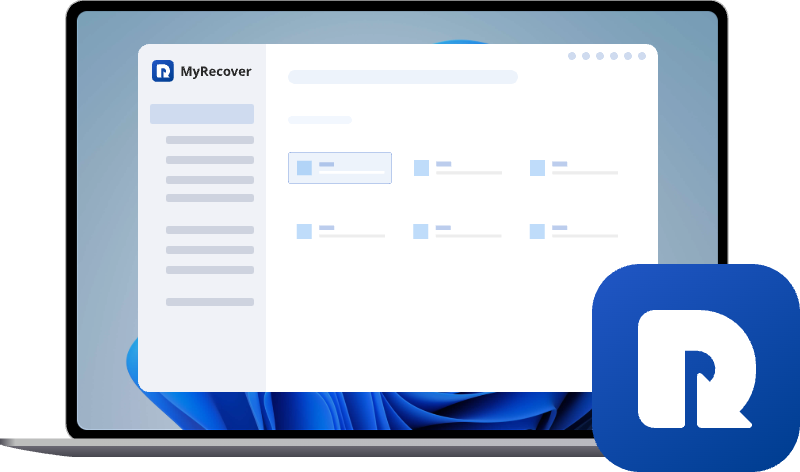Advanced NTFS EFS Data Recovery Methods [Stepwise Guide]
Here, we will share you with some effective NTFS EFS recovery methods. They are powerful solutions for restoring encrypted files protected by the Windows Encrypting File System (EFS), whether your NTFS drive has suffered a crash, file corruption, or accidental deletion.
What Does EFS Mean?
EFS (Encrypting File System) is a built-in Windows security feature that enables users to encrypt files and folders, ensuring that only authorized accounts can access them. It operates exclusively on NTFS (New Technology File System) drives, providing an effective layer of data protection against unauthorized access.
- Encryption and decryption happen automatically — you don’t need to run any external program.
- Files retain their normal extensions (e.g., .docx, .jpg) — no ".efs” extension.
- Encrypted files show a padlock icon in File Explorer.
- If the user account or encryption certificate is lost, the file becomes inaccessible.
Are EFS and BitLocker the Same?
No, EFS (Encrypting File System) and BitLocker are not the same, although both are encryption features built into Windows. The main difference lies in what they encrypt and how they protect your data:
EFS encrypts individual files or folders within an NTFS drive. It’s ideal for protecting specific documents and allows multiple authorized users to access encrypted data if configured.BitLocker, on the other hand, encrypts the entire drive or partition, including system files. It protects all data on the disk from unauthorized access, especially if the device is lost or stolen.
- ★In short:
- EFS = file-level encryption
- BitLocker = drive-level encryption
For maximum security, some users combine both — using BitLocker to secure the full drive and EFS to protect sensitive files within it.
👉Consider exploring: how to recover files from BitLocker encrypted drive
How to Perform EFS File Recovery?
EFS (Encrypting File System) is a powerful Windows feature that encrypts files and folders to protect sensitive data. However, if an encrypted file becomes inaccessible due to certificate loss, accidental deletion, or system corruption, recovery can be challenging. Fortunately, there are several ways to recover EFS-protected files, including restoring backups, using built-in Windows features, or employing professional recovery tools.
1: Restore from Backup
Restoring EFS (Encrypting File System) files from a backup is the most straightforward recovery method when you have previously exported your EFS certificate and saved encrypted files. This approach is ideal in scenarios such as:
- Migrating encrypted files to a new computer or user account
- Reinstalling Windows or recovering from a system crash
- Accidental file deletion where a backup exists
Step 1: Export the EFS Certificate
Before restoring files, make sure the EFS certificate is backed up.
Press "Win + R", type "certmgr.msc", and press Enter.
Navigate to "Personal → Certificates". Locate the certificate labeled Encrypting File System.Right-click → "All Tasks → Export".
In the export wizard, select "Yes, export the private key", and choose .pfx format.
Set a strong password and save the file to a secure location (external drive, USB, or encrypted cloud storage).
Step 2: Import the EFS Certificate
If restoring on a different computer or user account, you need to import the certificate.
Double-click the .pfx file to start the Certificate Import Wizard. Select Current User → Click Next.
Enter the password used during export. Complete the import process.
After importing, the certificate will appear under Personal Certificates.
Step 3: Restore Backup Files
Locate the backup of your encrypted files.
Ensure the destination drive is NTFS (EFS only works on NTFS partitions).
Copy or move the files to the desired location.
Open the files — if the certificate matches, Windows will automatically decrypt them.
2: Employ Professional EFS Recovery Tool
When an EFS certificate is lost, or encrypted files are corrupted or inaccessible, standard recovery methods may not work. In such cases, using professional EFS recovery softwarelike Advanced NTFS EFS File Recovery Tool. It provides a reliable solutionto recover encrypted files from NTFS drives, even in challenging scenarios such as system crashes, accidental deletion, or disk formatting.
Step 1. Install and launch the software.
Step 2. Select the NTFS drive where the encrypted or lost files are located. Initiate a scan to locate all recoverable files, including damaged or partially corrupted EFS files.
Step 3. Once the scan is complete, browse the list of detected files. Select the files you want to recover.
3: System Point Restore
If the encrypted files became inaccessible due to recent system changes, performing a Windows System Restore can revert your computer to a previous state where the files were accessible.
Step 1. Press "Win + R", type "rstrui.exe", and press Enter.
Step 2. Follow the wizard to choose a restore point dated before the issue occurred.
Step 3. Complete the restoration process.
After reboot, check if the EFS files are accessible.
Summary
EFS (Encrypting File System) is a robust Windows feature that protects sensitive files and folders through encryption. While encryption ensures strong data security, it can also make file recovery challenging if certificates are lost, files are accidentally deleted, or the system becomes unbootable. By following proper recovery methods, you can perform EFS recovery and regain access to encrypted files safely and efficiently.


